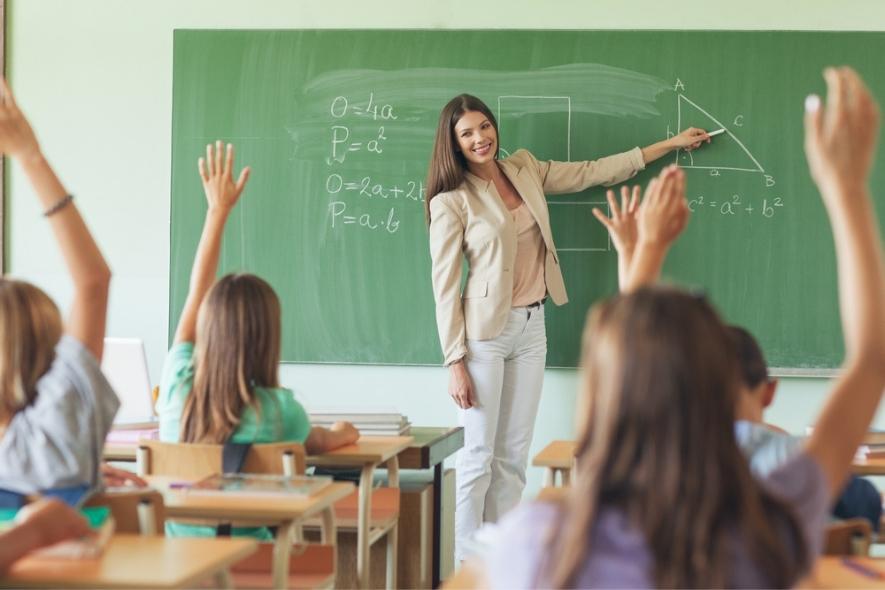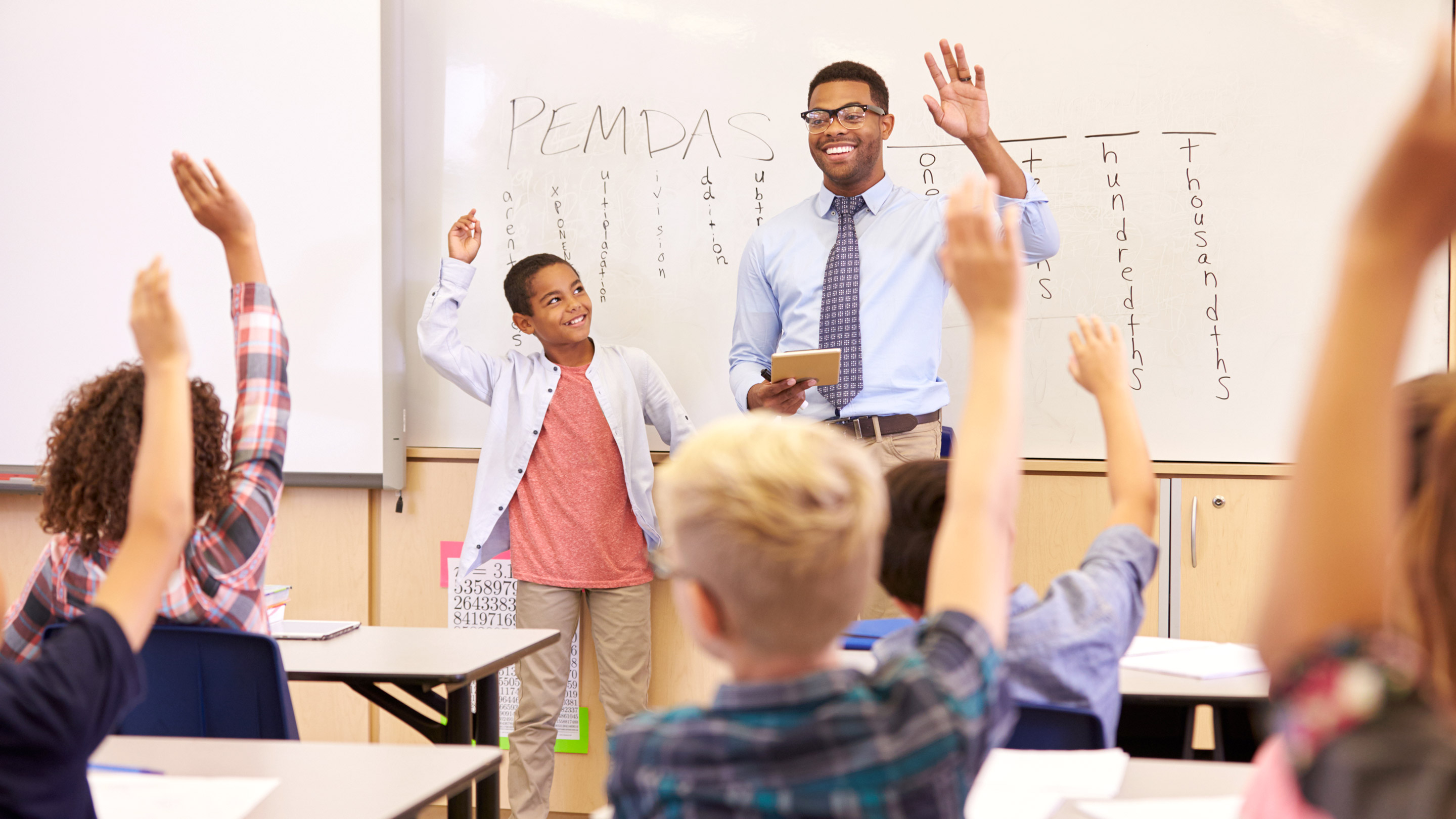Affordable Primary Science Tuition Singapore for All Learning Needs
Affordable Primary Science Tuition Singapore for All Learning Needs
Blog Article
A Comprehensive Guide to the Different Understanding Techniques in Main Science Instruction
The expedition of varied learning approaches in key science guideline presents a possibility for instructors to boost student involvement and comprehension significantly. By analyzing hands-on knowing strategies, inquiry-based approaches, and collaborative methods, we can identify effective techniques that satisfy different discovering styles. Additionally, the integration of technology and separated guideline plays a vital role in fostering an inclusive environment. The concern stays: just how can these methods be properly executed in the classroom to optimize their impact? The answer depends on a more detailed assessment of each approach and its implications for training scientific research.

Hands-On Discovering Techniques
Hands-on knowing strategies play a critical role in primary science guideline, engaging students in active exploration and experimentation. These techniques enable learners to engage directly with products and phenomena, fostering a deeper understanding of clinical concepts. By using manipulatives, versions, and real-life experiments, instructors produce an environment where students can observe, hypothesize, and test their ideas.
Such techniques not only boost comprehension yet likewise grow essential thinking and analytic skills. When pupils join activities like building basic devices, planting seeds, or performing chemical reactions, they are motivated to ask concerns and seek answers through their very own observations. This experiential technique helps to debunk complicated clinical concepts, making them extra relatable and available.
Moreover, hands-on discovering advertises collaboration amongst peers, as pupils commonly work in groups to conduct experiments or share searchings for. This synergy not just enriches their discovering experience but likewise develops crucial social skills. Inevitably, incorporating hands-on techniques in main science guideline cultivates a lifelong love of learning and curiosity about the all-natural world, laying a strong foundation for future scholastic searches in science and beyond.
Inquiry-Based Knowing
Inquiry-based learning is a training approach that motivates trainees to ask concerns, check out sensations, and construct their own understanding of clinical concepts. This approach shifts the focus from typical teacher-led guideline to an extra student-centered experience, where students take the effort in their academic journey. By fostering interest, inquiry-based discovering promotes much deeper interaction with the material, enabling trainees to check out topics in a meaningful context.
In method, this approach commonly includes hands-on experiments, observations, and vital reasoning activities that align carefully with the clinical technique. Pupils are urged to formulate hypotheses, style examinations, and evaluate data, which grows vital abilities such as logical and problem-solving thinking. The function of the educator in this structure is to facilitate expedition, guiding pupils via the inquiry process while urging independent idea and cooperation.
Moreover, inquiry-based knowing supports a feeling of ownership over the knowing procedure, motivating students to pursue knowledge proactively. This method not only improves understanding of clinical ideas yet additionally fosters a long-lasting love for learning, gearing up students with the abilities essential to browse a progressively complex globe.
Collaborative Discovering Approaches
Joint understanding techniques equip pupils to involve in meaningful communications with peers, promoting a shared responsibility for their academic results. In main science direction, these approaches encourage students to collaborate to check out clinical ideas, solve problems, and conduct experiments (primary science tuition Singapore). By taking part in team activities, pupils can utilize varied viewpoints, permitting richer understanding and retention of scientific understanding
One secret aspect of joint knowing is the emphasis on interaction abilities. Students have to verbalize their ideas, pay attention proactively to others, and negotiate concepts, every one of which are vital competencies in both real-world and scholastic contexts. This social interaction not only enhances their understanding of scientific principles but additionally promotes team effort and conflict resolution skills.
When trainees see the value of their contributions within a group, they are a lot more most likely to take ownership of their learning journey. Generally, incorporating collaborative discovering techniques in primary scientific research direction grows a dynamic learning setting that prepares trainees for future academic and social obstacles.
Modern Technology Assimilation in Scientific Research
The integration of innovation in main science direction improves discovering experiences by supplying ingenious tools and resources that sustain numerous mentor techniques, including joint learning - primary science tuition Singapore. The use of digital platforms, simulations, and interactive applications allows students to involve deeply with scientific principles, promoting an extra hands-on strategy to understanding
Digital labs, for circumstances, allow learners to carry out experiments securely and efficiently, promoting inquiry-based learning. These devices can replicate real-world scientific situations, allowing students to imagine complex procedures that would certainly be hard to replicate in a traditional class setup. Innovation cultivates communication and collaboration amongst trainees, as they can share searchings for and work with each other on this content projects with on the internet platforms.
Furthermore, multimedia presentations and instructional videos can enrich lessons by dealing with varied learning styles, making abstract concepts more obtainable. Data analysis tools likewise encourage pupils to accumulate and analyze clinical information, reinforcing crucial believing skills. On the whole, the critical incorporation of modern technology in main scientific research instruction not just enhances engagement yet likewise prepares pupils for a highly sophisticated culture, furnishing them with essential abilities for future clinical undertakings.
Separated Guideline Approaches
Set apart instruction approaches are essential for resolving the varied demands of learners in main scientific research education and learning. These approaches enable educators to customize their mentor methods to accommodate differing capabilities, passions, and learning designs within the class. By using set apart guideline, educators can create a comprehensive atmosphere that fosters involvement and improves understanding of scientific concepts.
One effective approach is to use versatile organizing, which enables pupils to collaborate with peers at similar skill degrees or with differing perspectives. This approach urges peer learning and advertises important thinking. In addition, providing choices in jobs can equip students, allowing them to choose tasks that resonate with their rate of interests while still meeting curricular objectives.
Moreover, including tiered jobs is an additional important strategy. Deliberately jobs with varying degrees of intricacy, educators can make certain that all pupils are suitably challenged, no matter their proficiency. Using formative assessments to assess comprehending more enables teachers to adjust their instructional methods dynamically, making certain that each student gets the assistance they need.
Ultimately, implementing separated direction approaches in main science education and learning not just improves student learning results but additionally cultivates an interest for scientific research, preparing trainees for future academic quests.

Final Thought
In summary, effective main science guideline requires a complex method that encompasses hands-on knowing, inquiry-based methods, and joint methods. The integration of modern technology and differentiated direction additionally caters to diverse knowing designs, cultivating an atmosphere for exploration and vital thinking. By carrying out these strategies, educators can boost student involvement and understanding, inevitably nurturing a lifelong enthusiasm for scientific research and inquiry. Such comprehensive methods are crucial for creating informed and curious future scientists.
The expedition of diverse discovering methods in key science guideline presents a possibility for educators to improve student involvement and comprehension dramatically.Hands-on knowing strategies play a critical role in primary scientific research direction, engaging students in energetic expedition and testing.Inquiry-based knowing is an instructional strategy that urges trainees to ask concerns, investigate sensations, and create their own understanding of scientific concepts.Joint knowing strategies empower pupils to engage in have a peek at these guys meaningful interactions with peers, cultivating a find more shared duty for their academic results. On the whole, including collaborative learning methods in key scientific research direction grows a dynamic knowing environment that prepares pupils for future academic and social challenges.
Report this page